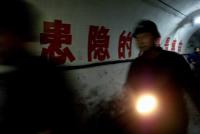Our 10 latest relevant articles.
Work Accident Map user guide and CLB methodology
10 January 2024
Factory workers, truck drivers, and coal miners are just some of China’s worker-vloggers who share their daily experiences online to large followings
06 October 2023
The mining company disclaimed responsibility for the “natural disaster,” but workers had raised alarms about slag dumping
30 June 2023
CLB’s February 2023 mapping data shows an increase in incidents in the manufacturing sector, which is affected by factory closures and relocations
16 March 2023
The swift and stern response from authorities may result in accountability after the fact, but focus should instead be on prevention
23 February 2023
Migrant workers in the construction sector and in the steel and coal production industries face a high incidence of wage arrears
14 September 2022
Medical workers seek wages in arrears, concentrated in China’s north-eastern provinces
16 August 2022

